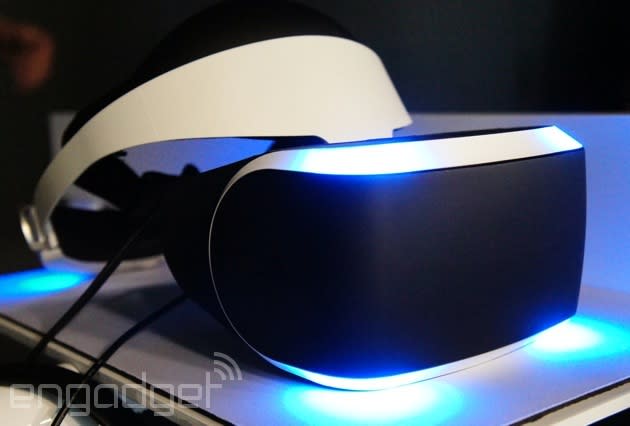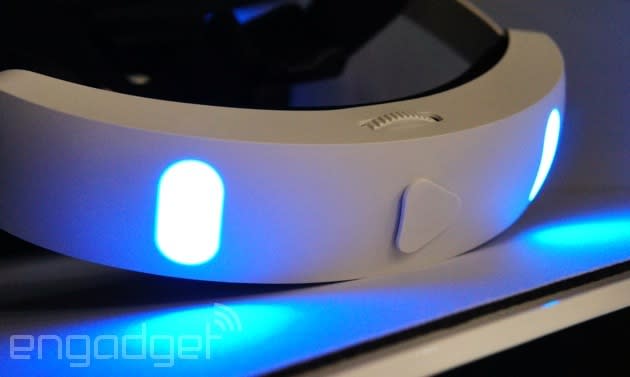Using the PlayStation 4's virtual reality headset, Project Morpheus (update: now with video!)

The cat's out of the bag and... uh, on our head? Okay, we can do better than that, but what we're trying to say is that we just used Sony's new PlayStation 4 virtual reality headset: Project Morpheus. You already know the specs and all that good stuff; we're here to tell you what it's like using the still-in-prototype-form virtual reality headset for the PlayStation 4. Good news: It's pretty great! Surprise!
Join us below for a closer look.
Project Morpheus, right now, is a little uncomfortable. In so many words, it feels like a prototype still. As a demo man fit the headset on my generously sized noggin, he tightened a variety of different adjustments: one that tightened the whole unit on my head, another that brought the display portion forward toward my eyes. When you initially put it on, there's a gap between where you're looking and below -- certainly not a great way to create immersion. Thankfully, that gap closed easily in the two different demos we tried (The Deep and The Castle -- both of which were more tech demo than game).
I'd love to say it was a sweat-free experience; between gesticulating with PlayStation Move controllers as hands and being surrounded by hundreds of GDC attendees waiting for their chance to try Morpheus, I was relatively moist by the time I'd cut up the dummy model in The Castle with a virtual sword. While uncomfortable, I can get over that -- the issue is that it makes the optics fog up and that's no good at all. Part of the unit's design is based around keeping players cool, so you should expect a better experience as Morpheus goes from prototype to reality.

So, games! What's it like using Morpheus to play games? It's pretty neat! Well, that's to say, "It's a lot like playing games in the Oculus Rift headset, especially the newer versions of the Rift." In The Deep, I took a trip to the bottom of the ocean in a metal cage; when I bent down, my in-game knees bent (as tracked by the PlayStation Camera). When I looked up, my perspective turned skyward and the lamp mounted to my virtual head followed (the lighting was perhaps the most impressive part, with cage bars occluding properly and all).
In The Castle, I picked up two PlayStation Move controllers to act as hands, which enabled me to bend over, pick up a sword and take a dummy down a few notches. If I moved back a few steps, my in-game avatar moved back a few steps. One major change in Morpheus compared with other VR headsets is full-body tracking, which does legitimately add to the immersion effect.

It's not all virtual reality rainbows and dreams, of course. There are still some pretty major issues to overcome in Project Morpheus. Vision blur, for instance, is a much bigger problem on Morpheus than on Crystal Cove/Rift DK2. The screen resolution is also clearly not as high as DK2, making everything a bit muddier, visually speaking. Right now, well ahead of launch (Sony's not even talking about what the final product will be just yet, nonetheless giving it a launch window), Project Morpheus is both extremely promising and clearly not ready for prime time. But it's close!
To put it frankly, we're extremely excited to see what the next few years mean for the entire medium of VR, not to mention the efforts of major players like Sony, Valve and Oculus. Morpheus is the second major entry in the field, and, well, that's really thrilling! In case it weren't already clear, this is the week that virtual reality officially goes big.
Photos and video: Michael Gorman, Nicole Lee and Edgar Alvarez.





















